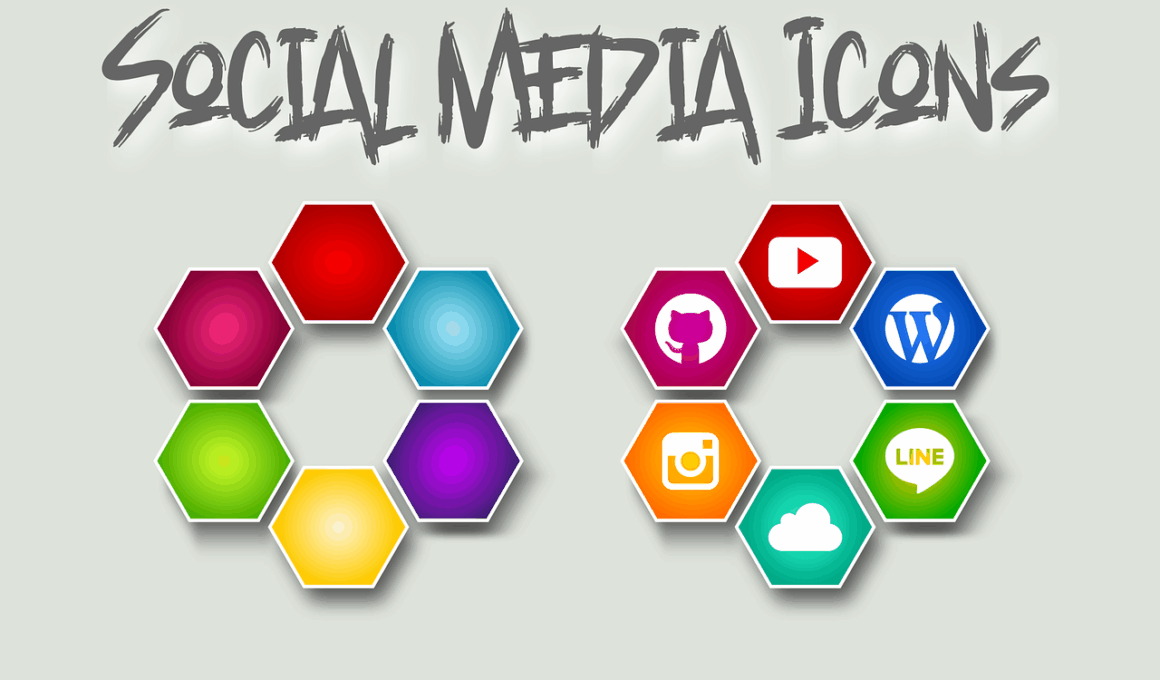Using Infographics as a Visual Branding Tool on Social Media
In today’s digital landscape, infographics serve as powerful tools for visual branding, particularly on social media platforms. They capture attention quickly, communicate complex information effectively, and help brands stand out. The effectiveness of infographics stems from their ability to present data and ideas in a visually appealing manner. For social media, where users scroll through endless content, this can lead to increased engagement. Moreover, well-designed infographics can drive shares, aiding in the organic reach of your brand. Social media algorithms favor content that encourages interaction, making infographics highly shareable. By blending colors, fonts, and imagery, brands can convey their identity and message clearly. This not only helps in recognition but also enhances the overall user experience. To optimize the use of infographics, consider platforms like Instagram, Twitter, and Facebook, where visuals predominantly rule. Focus on specific themes that resonate with your audience. Additionally, integrating brand colors, logos, and consistent styles in your infographics reinforces your branding efforts. As visual learners, consumers benefit greatly from well-crafted infographics, amplifying your brand’s impact and relevancy within the competitive social media space.
Creating infographics requires an understanding of both design principles and the target audience. Start with a strong concept that aligns with your brand values and goals. Then, research relevant data to support the information presented in your infographic. Choosing the right design elements is vital; use colors, typography, and images that reflect your brand’s personality. Tools such as Canva, Piktochart, or Adobe Spark are excellent for crafting visually appealing infographics without needing extensive graphic design skills. It’s also essential to keep your design clean and uncluttered, ensuring viewers can absorb the information presented quickly. When infographics are too busy, they lose effectiveness. Aim to strike a balance between visuals and text by using bullet points or icons to break down information. Once the design is complete, test the infographic for user feedback to see if it resonates with your audience. Iterating based on feedback can lead to optimal designs. Don’t forget to analyze engagement metrics post-publishing to refine future infographics. This continuous improvement loop is crucial for long-term success in leveraging infographics for visual branding.
Best Practices for Infographic Design
Following best practices for infographic design can significantly impact their effectiveness. First, prioritize clarity over complexity. Simple, straightforward infographics tend to perform better than overly intricate ones, which may confuse viewers. Aim for a harmonious color scheme that matches your brand, maintaining consistency across various social media platforms. Pay attention to font choices, as readability is crucial; use contrasting colors for text to enhance visibility. Each infographic should communicate one main idea effectively. Overloading it with multiple messages dilutes the focus and may frustrate viewers. Create a logical flow by organizing the elements in a way that naturally guides the audience through the information. Including engaging data visualizations like charts, graphs, or timelines can further enhance comprehension. Incorporate your logo and social media handles prominently but subtly within the design to reinforce branding without overwhelming the content. Utilize whitespace strategically; this helps prevent visual clutter and allows users to digest information more easily. Finally, consider mobile optimization for designs, as most users access social media on their phones. A mobile-friendly infographic ensures a better user experience and encourages sharing.
To enhance engagement, explore innovative ways to present infographics on various platforms. For Instagram, for example, consider utilizing carousel posts, where multiple images highlight different parts of the infographic. This encourages users to swipe and interact with your content. On platforms like Pinterest and Facebook, infographics can serve as compelling shareable content that drives traffic back to your website. Additionally, videos that incorporate infographics or animated elements can increase audience retention rates. Hosting live sessions, where an expert discusses the data from your infographic, can create a stronger connection with your audience. Invite them to ask questions, fostering a sense of community. Collaborations with influencers or brands that share an audience can also amplify the reach of your infographics. Ensure the content remains relevant to both parties to maintain authenticity. Leverage hashtags effectively to aid discoverability; create a unique branded hashtag for your infographic campaigns. This helps in tracking engagement across platforms. Keeping an updated calendar of content and trends ensures that your infographics remain timely and relevant, keeping your brand at the forefront of your audience’s minds.
Measuring the Success of Your Infographics
Evaluating the performance of your infographics is essential for understanding their impact on your branding efforts. Start by monitoring engagement metrics, such as likes, shares, comments, and click-through rates. These indicators provide insights into how well the infographic resonates with your audience. Employ tools like Google Analytics to track website traffic spikes, which can correlate with your infographic posts. Identifying which infographics receive the highest engagement can help refine future content strategies. A/B testing can also be valuable; share two variations of an infographic to discern which design captures more attention. Analyzing audience demographics can provide context around who interacts with your infographics, allowing for targeted adjustments. Encourage feedback and actively engage with comments on social media posts, as this directly impacts future design and content creation. Establishing a clear goal for each infographic helps measure success effectively; whether it’s increasing brand awareness or driving website traffic, clarity allows for focused analysis. Most importantly, document the findings and use this information to iterate and improve subsequent infographic campaigns, fostering a culture of continuous learning for your social media branding.
Utilizing user-generated content can further enhance the potency of your visual branding strategy on social media through infographics. Encourage your audience to create and share infographics related to your brand or products, incentivizing participation with contests or giveaways. Not only does this increase engagement, but it also cultivates a community around your brand. Explore platforms such as Instagram Stories, where you can share customer-created infographics, showcasing authentic experiences and testimonials. The inclusion of real user experiences enhances brand credibility and relatability, making your brand more approachable. Ensure that you have a clear set of guidelines on how users can participate, maintaining consistency in branding and messaging. This approach not only amplifies your reach but also expands your content library. Additionally, featuring user-generated content in your marketing campaigns demonstrates that you value your audience’s contributions, fostering loyalty. Collaborating with your audience enhances your relationship with them, creating advocates for your brand. This strategy not only strengthens your community but also reinforces the effectiveness of your branding efforts through visual storytelling that transcends traditional marketing.
Future Trends in Visual Branding
As we progress further into the digital age, future trends in visual branding are likely to evolve significantly, particularly in how brands use infographics. Integrating artificial intelligence in design processes may lead to more personalized and context-aware infographics tailored to individual user preferences. Moreover, interactive infographics may gain prominence, enabling users to engage with the content actively. This can help convey complex data more interactively and could enhance retention rates. Virtual and augmented reality elements might also find their way into infographic designs, creating immersive experiences that engage users on different levels. Furthermore, sustainability is becoming a pivotal concern; brands may emphasize the environmental impact of their content creation and distribution methods in their infographics. Infographics that convey sustainability efforts can strengthen a brand’s position as a responsible entity. As consumers seek authenticity, incorporating user-generated content in infographics will become more crucial. The merging of storytelling elements with infographic formats can create compelling narratives that enhance brand loyalty and recognition in competitive markets. Monitoring these trends will help brands stay relevant and effective in their visual branding through infographics.
Ultimately, the incorporation of infographics in social media branding strategies will significantly enhance a brand’s visibility and impact. They serve as vital communication tools that can distill intricate information into digestible formats. The visual nature of infographics fosters quick comprehension and can be instrumental in campaigns aiming to convey statistical data or complex messages. Considering the rapid pace at which social media evolves, keeping abreast of design trends and audience preferences is crucial for brands. Regularly updating your approach to infographics ensures they remain fresh and engaging. Remember that consistency across platforms in visual branding is key to establishing strong brand identity. Each infographic should align with your overarching brand vision while catering to specific audience segments. Continued investment in infographic content creation will yield long-term dividends in audience engagement and brand loyalty. Over time, brands that master the art of impactful infographic storytelling will undoubtedly rise above the competition. By leveraging data-driven insights, creative design, and strategic distribution, businesses can unlock the full potential of infographics in their branding endeavors. Monitor trends, listen to your audience, and innovate, as these principles will propel successful social media branding.


